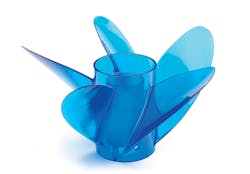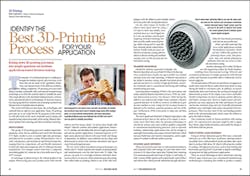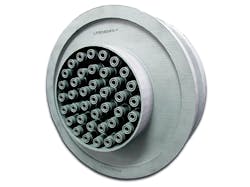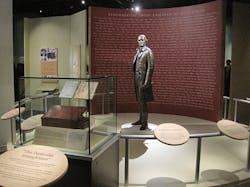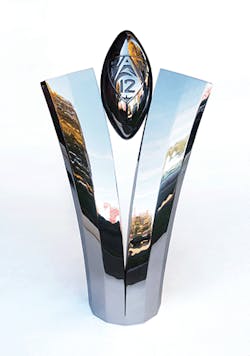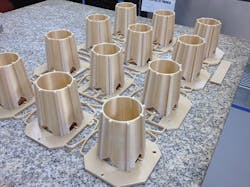Identify the Best 3D-Printing Process for Your Application
This file type includes high-resolution graphics and schematics when applicable.
The dynamic 3D-printing landscape is a challenge to navigate for industry experts, and even more so for those who are not aware of the capabilities, limitations, and idiosyncrasies of the different technologies. Further adding complexity, 3D-printing processes don’t always translate comparably with conventional manufacturing technology, even when the material output is virtually the same. This is typically due to the dissimilar build parameters, environment, and material delivery methodology. To learn the nuances, you must grasp the basics behind each technology and know the full spectrum of available material options.
This article will help you determine the technologies and materials that are right for your application. Many 3D-printing processes are in use today, but for the purposes of this article, we will only touch on the most commonly used in design and manufacturing engineering today: photocuring, filament deposition, polymer laser sintering, and direct metal laser sintering.
Photocuring
This group of 3D-printing processes employs liquid photopolymer resins that are solidified and cured with ultraviolet (UV) light, mostly to serve as models, light-duty prototypes, and patterns for secondary casting. Photopolymers vary in color, transparency, and mechanical and thermal properties, ranging from low-temperature soft and flexible elastomers to hard and rigid nanocomposites able to withstand elevated temperatures. For example, Somos NanoTool, a composite stereolithography (SL) material, has a heat deflection of up to 437°F at 66 psi.
An advantage of photocuring is the refined quality of the output. Photocuring processes produce parts with smooth surfaces and fine-feature detail—16-micron layer height with PolyJet—ideal for cosmetic and aesthetic applications. However, UV stability and durability falls short for high-performance and end-use product applications. Continued exposure to UV light causes photocured objects to become brittle and change in appearance. In addition, some materials can lose shape and dimensional accuracy from moisture absorption and sag or creep from prolonged pressure.
The two most widely used photocuring technologies are PolyJet and SL. PolyJet deposits tiny droplets of photopolymer and simultaneously cures the thin layers with UV light. This process can print in a very high resolution with layer thicknesses as thin as 16 microns, which minimizes post-processing. Also called multi-jet printing, PolyJet is one of the only technologies with the ability to print multiple materials in one print with varying durometers.
On the other hand, SL builds 3D objects layer upon layer by using a UV laser to draw and solidify cross-sectional slices in a vat of liquid resin. It too can produce smooth parts requiring minimal finishing, but does not offer multi-material printing. Multi-jetting and SL typically have minimal shrink-related deformation. Finally, both processes are ideal for producing casting patterns aimed at silicone tooling and urethane casting, and sacrificial patterns for investment casting.
Filament Deposition
Guided by software-generated toolpaths, the filament-deposition processes build 3D objects by drawing cross-sectional slices of parts one upon another via a heated extruder head. One chief advantage of filament deposition is the ability to produce strong and durable functional prototypes and end-use parts in a variety of high-performance materials commonly used in conventional machining and molding manufacturing processes.
Fused deposition modeling (FDM) is the most mature and widely adopted filament deposition process. FDM can maintain dimensional accuracy over distance while having the ability to save material and weight. Some companies will post a general tolerance of ±0.008 inches; however, it’s difficult to give an exact number or even a range for this accuracy because it depends on the machine, material, geometry, and size of the part. In addition, FDM is less prone to warp and curl than laser sintering.
The most significant drawback of filament deposition is the pronounced layer lines in the surface of its output. It necessitates more effort than other 3D-printing technologies to smooth the surfaces and create aesthetic qualities comparable to conventional manufacturing processes, such as injection molding. Additionally, applications that call for airtight or watertight functionality may require a denser build style, which increases build time and material consumption, and/or application of a sealant to alleviate surface porosity.
Polymer Laser Sintering
These practical processes fuse or melt powdered polymers and composites with a low wattage CO2 laser that sinters cross-sections of 3D objects layer upon layer. Polymer laser-sintering (LS) materials primarily have bases of Nylon 12 and Nylon 11, with a variety of filler options such as glass beads, mineral fiber, and carbon fiber, which provide substantial strength and durability for functional prototyping and end-use part production.
Other specialty materials that serve niche applications include thermoplastic elastomer, which can have rubber-like qualities for prototype hoses, seals and grommets. Also, low-density polystyrene infiltrated with wax can serve as a low-ash investment casting.
Another advantage of LS is that 3D objects are self-supporting within the build chamber, enabling three-dimensional nesting. Efficient and economical production of complex geometries with internal cavities and channels are possible with LS without the need to remove supports.
The thermal nature of the process and absence of supports to anchor laser-sintered objects makes them more prone to warp during the build or cool-down cycle. In addition, an inverse relationship often exists between the mechanical strength and dimensional accuracy of the output. Laser power and build chamber temperature increase to optimize particle adhesion, and build a stronger part. However, higher power and temperatures can cause expansion; the walls and features of a part can become oversized, warp, and curl. Generally, dimensional problems arise with higher laser-power and powder-bed temperatures. That’s because more of the surrounding powder sticks to the sintered/melted part, which causes the surfaces to grow and walls to thicken.
This commonly results in fitment problems with mating parts. Yet, experienced LS operators might be able to adjust laser offsets, adjust build orientation, and modify the design to work better with the process.
Direct Metal Laser Sintering
Using an yttrium-aluminum-garnet-fiber laser, commonly referred to as a YAG-fiber laser, metal laser-sintering systems essentially micro-weld powdered metals and alloys layer upon layer to produce fully dense 3D objects with properties similar to castings. Through post processes, such as heat-treating and hot isostatic pressing (HIP), it’s possible to improve metallurgical properties for high-performance applications.
There are several advantages to direct-metal-laser-sintering (DMLS) types of processes over conventional manufacturing methodologies, including their ability to produce complex contoured geometries without excessive programming or tooling costs. The additive nature of 3D printing saves material and weight, and offers greener manufacturing compared to casting and deductive processes.
In addition, 3D printing is able to consolidate assemblies, reducing the number of components that can reduce labor cost and fasteners, and simplify a product. Taking advantage of these features with the DMLS process is ideal for low-volume manufacturing of end-use parts and products, and high-performance functional prototypes.
On the downside, the learning curve to build quality DMLS parts and products is substantial. A knowledgeable technician or designer should understand how to use a CAD model to verify that a print is economically viable before it goes to print. A skilled operator will need to develop effective build strategies to mitigate warping and minimize support structures. Furthermore, for optimal dimensional accuracy, smooth surface finishing, and tiny features, DMLS users often have to utilize more sophisticated post-processing and finishing systems, such as CNC machining, wire EDM, chemical etching, liquid honing, tumbling, media blasting or coating.
Selection Methodology
A trained staff can screen and qualify the best processes and materials for each customer’s specific applications and needs. There isn’t a single technology well-suited for every application, and there isn’t always a clear-cut solution for a customer’s specific needs. Often multiple options could work, each with a different set of pros and cons. The following seven considerations can help you qualify and disqualify processes and materials for each of your unique projects:
1. Application: What is the purpose of the object?
The intent for 3D-printed objects could range from cosmetic show models and mock-ups, to functional prototypes, R&D test pieces, or end-use production parts and products. The requirements of each of these applications can vary greatly, and therefore are better suited to some processes. It often comes down to cosmetic, dimensional, or performance requirements.
2. Functionality: What does the part need to do?
A 3D-printed part may simply need to hold shape as a static model or bear a close resemblance to a conventionally manufactured product with fine detail and smooth surfaces. In this case, PolyJet or stereolithography may be the ideal process. Hard-working parts that must bear a load or resist impact could be better suited to the FDM process. If the application involves a snap fit or durable living hinge, LS may be the better option.
3. Stability: In what environment does the part need to function?
The need to maintain properties and function in higher temperatures rules out some 3D-printing processes and materials. In addition, outdoor applications require a UV-stable material such as acrylonitrile styrene acrylate (ASA) or durable laser-sintered nylon with a UV-inhibitive coating. Photopolymers will not work well for outdoor environments because they react to UV light. Moisture is another common factor that adversely affects many materials. If biocompatibility is necessary for a surgical device, then metals, such as titanium Ti-64 for DMLS or electron beam melting could be the best, if not the only, option.
4. Durability: How long does the part need to last?
The number and duration of use cycles can eliminate some processes and materials. For example, a 3D-printed mold or form tool may need to go through hundreds of cycles and withstand prolonged stress and friction, whereas a fit-check prototype may only need to function once. Photopolymer materials are often effective for short-term, low-stress applications and are typically unable to withstand prolonged stress. Engineered thermoplastics from the FDM and LS processes can serve many functional prototyping and end-use purposes for increased cycle life.
5. Aesthetics: How does it need to look and feel?
You can generally expect photocured 3D objects to be fairly smooth and have high resolution right off of the machine, and can easily be hand-finished to a cosmetic state. While thermoplastic and powdered plastic processes such as LS and FDM produce stronger and more durable parts, cosmetically they will require more labor and skill to achieve a smooth surface, leading to higher costs and increased lead time. With the rugged metals and alloys of DMLS, it takes much more time, effort, and expertise to produce a polished look.
6. Economics: What is your budget, timeline, and quality expectation?
If you have a firmly capped budget, the decision may be on price rather than other factors. Time and quality are often in conflict with one another; rapid turnaround and high-level cosmetic finishing can be mutually exclusive. However, shortcuts, workarounds, and efficient systems can reduce lead times and costs while maintaining high quality standards. Efficiencies can be gained from working with a service bureau that can creatively batch, nest, strategically section, shell, adjust fill, and modify build orientation to reduce machine time and material consumption.
7. Priorities: Of all these factors, which is the most important?
Ultimately, you must consider all factors and decide on those that are most important to achieve the primary objectives and project goals. Often there are several competing requirements, but your main priorities should drive your decision and filter the 3D-printing technology and material options. If you have a short timeline, economics is the determining factor. If long life is the priority, durability may be the determining factor.
Selecting the optimal technology and material for a project is imperative to maximizing success. The primary point to remember is that the “one-size-fits-all” approach doesn’t apply to 3D printing. It is essential that you either invest time to learn the pros, cons, and nuances of the major processes, materials, and post processes, or find an objective partner or expert who has the experience and know-how to give you sound guidance.
Below are three examples of possible 3D-printing choices, and factors involved in the decision process:
Thomas Jefferson Statue Replica
Application: Life-sized model
Function: Replica of bronze statue
Stability: Withstand post processing and shipping, indoor lighting
Durability: Last indefinitely in indoor climate
Aesthetics: Smooth, primer, paint
Economics: Reduce weight, affordable large object
Priorities: Visual appeal and long-term stability
Selection: FDM process, ID-Light build style, ABS M-30 material
Read the full story: https://www.stratasysdirect.com/case-studies/the-making-of-a-legend/
Archie Handheld Studios
Application: Investment cast-metal trophy
Function: Burn-out pattern to form ceramic shell for casting
Stability: Pattern had to hold shape, be moisture-resistant and watertight
Durability: One-time-use only
Aesthetics: Smooth surface finish
Economics: Quick lead-time more important than price
Priorities: Rapid turnaround time and smooth surface finish
Selection: Stereolithography investment casting pattern, SC 1000 material
Read the full story: https://www.stratasysdirect.com/case-studies/pac-12-trophy/
NASA JPL Satellite Parts
Application: Satellite antenna array
Function: Holds radio antenna wires
Stability: Withstand extreme temperatures, vibration, and exposure in outer space
Durability: Indefinite lifespan
Aesthetics: Compatible with a protective paint
Economics: Lead-time reduced by consolidating multiple assemblies into one part
Priority: Stability and durability
Selection: Fused deposition modeling (FDM) and ULTEM 9085
Read the full story: https://www.stratasysdirect.com/case-studies/nasa-3d-printed-satellite/
Ron Clemons is the Director of Business Development at Stratasys Direct Manufacturing. Ron has 19 years of experience in the 3D-printing industry and leads a group that works on developing advanced manufacturing solutions for key vertical industries.
Looking for parts? Go to SourceESB.
